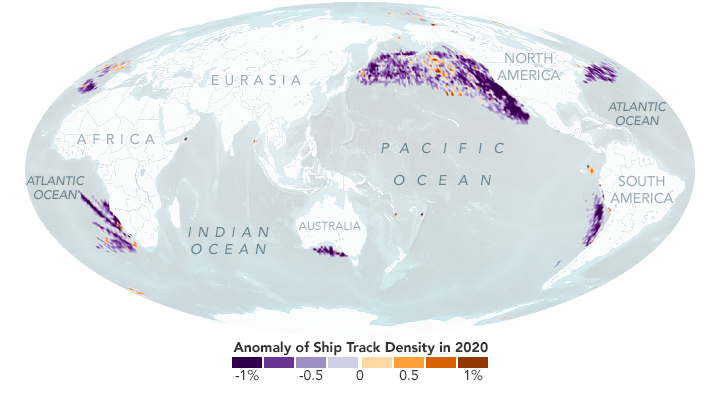The fight against climate change is a complex dance, filled with unexpected consequences. A new study sheds light on this complexity.

In 2020, the International Maritime Organization (IMO) implemented a global standard to significantly reduce sulfur content in shipping fuels. This policy, lauded for its environmental benefits, achieved immediate success. NASA data confirmed a noticeable decrease in pollution along shipping routes.
However, new research suggests this victory might come with an unintended consequence – a potential short-term acceleration of global warming.
The study highlights the role of sulfur oxide emissions from ships. These airborne particles, known as aerosols, act as a shield, reflecting sunlight away from Earth. With the significant reduction in sulfur emissions, this shielding effect weakened, allowing more solar radiation to be trapped in the atmosphere. This phenomenon could partially explain the record-breaking global temperatures observed in 2023.

These findings underscore the intricate challenges in climate change modeling and mitigation strategies. They also serve as a cautionary tale for solar geoengineering efforts aimed at cooling the planet.
The researchers employed satellite data and atmospheric modeling to calculate the impact of reduced sulfur emissions on radiative forcing, the change in energy balance within Earth’s atmosphere. Their analysis confirmed a decrease in human-made aerosols along shipping lanes, leading to an average increase in radiative forcing of 0.2 watts per square meter (although this varied regionally).
This research compels us to critically examine solar geoengineering techniques like marine cloud brightening, which proposes injecting aerosols into the atmosphere to mimic the sunlight-reflecting properties of natural aerosols.

Even if successful, scientists worry about the long-term viability of such methods. Abruptly stopping these interventions could trigger a “termination shock” – a rapid temperature rise as the reflective shield disappears. This scenario could leave us in a worse predicament than before.
The unintended experiment created by the IMO’s sulfur reduction policy serves as a real-world example of this termination shock. However, this shouldn’t be seen as a complete dismissal of geoengineering solutions, nor a reason to abandon pollution reduction efforts. The fight against climate change demands a nuanced approach, one that acknowledges the complexities and potential pitfalls of various strategies.
Reference- Journal Communications Earth & Environment, The Guardian, International Maritime Organization






